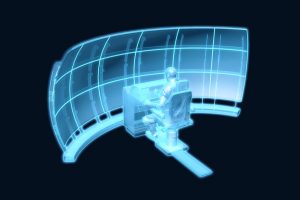
DSEI 2023 – BMT unveils a Large Uncrewed Surface Vessel (LUSV) vision
At DSEI 2023, the BMT multi-disciplinary engineering and ship design consultancy company unveiled its vision for a Large Uncrewed Surface Vessel (LUSV) that complements the previous studies into Highly Autonomous Warship Technologies (HAWT)

“The naval landscape is evolving and so must our operating strategies. Whilst the concept of a Large Uncrewed Surface Vessel (LUSV) is not new, many navies debating their future fleet composition have yet formally consider the use of these types of high endurance vessels to enhance their surface fleets. Our purpose with this vision was to explore the potential of LUSVs adding mass to an existing or future fleet,” Monty Long, Global Business Development Director for Defence, Maritime and Security at BMT said.
As remarked, the HAWT vision embraced lean crewing to provide a flexible and highly capable protean force with a minimal crew on board who can still make live and local command and control decisions. “The LUSV vision strongly complements this operating concept and could operate alongside this lean crewed vessel providing cost effective, added mass to the fleet and utilising many of the underlying technologies,” Jake Rigby, research and development lead for Defence and Security at BMT explained.
According to the study presenting the LUSV vision, ‘a force-mix of crewed systems operating as the mission commander alongside uncrewed protean platforms operating up-threat could transform the battlespace. This lead to the creation of the LUSV vision – a simplified supporting vessel that can utilize the full benefits of autonomy to help reduce costs. The study is combination of expertise of BMT for vessel design and Atlas Elektronik for autonomous control and mission systems.

The study has been focused on a primary anti-submarine warfare and a secondary air threats early warning capability, to allow a task force to counter a threat from entering a sensitive area, such as the Greenland Iceland UK (GIUK) Gap. Among requirements we find an endurance of one month (threshold), Sea State 6 seaworthiness, 10-12 knots loitering speed, 20 knots sprint speed, a payload and space for 6+ 20-foot containers, the capacity to accommodate and deploy a towed array over the stern, and that to embark flexible mission modules. All this with reduced radar and acoustic signatures, and a cost of £ 50 – 100 million, to provide added mass to the fleet at less than half the cost of a traditional vessel.
The resulting concept design, according to the study, is an 80 meters long platform to provide the seakeeping and stability required for persistent ocean presence, completely uncrewed, characterized by low resistance to glide through the water with minimal resistance and reduced power demand for long duration operations, low signature features including collapsible bulwark to shield containers on the rear working deck that can be removed if open deck is required, alongside reduced radiated noise to enhance survivability and surveillance capabilities. The LUSV concept design will also have to operate without physical human intervention, which requires sensors and communication equipment to be controlled via a shore operations centre but commanded as part of a fully-networked, interoperable fleet. To reduce vulnerability from attack, these systems are separated in forward and aft masts.

The study analyses six challenges and research areas, namely command and control ; sensor data management to provide key, encrypted operational data at the speed of relevance; engineering systems, which consider sustainable propulsion systems and future alternative fuels; vessel and mission resilience, allowing the vessel to remain at station whatever is thrown its way, a key factor being the understanding and achievement of a balance between resilience on mission and achievement of cost; maintenance and logistics, to ensure system reliability and availability with different approaches to implementing maintenance; modularity, to provide a flexible solution with ample capacity for carrying various modular payloads.
This paper explores the wider technical feasibility of the concept, and although there are some clear technical challenges still to be overcome as highlighted in the ‘technology roadmap up to 2050s’ illustrated in the study, according to BMT there is a clear pathway to future technical feasibility. The two greatest challenges areas still to be overcome are the engineering systems (especially if an alternative fuel source is selected) and the maintenance and logistics aspects that will require a change in thinking on how a naval vessel is supported.
Graphics courtesy BMT



